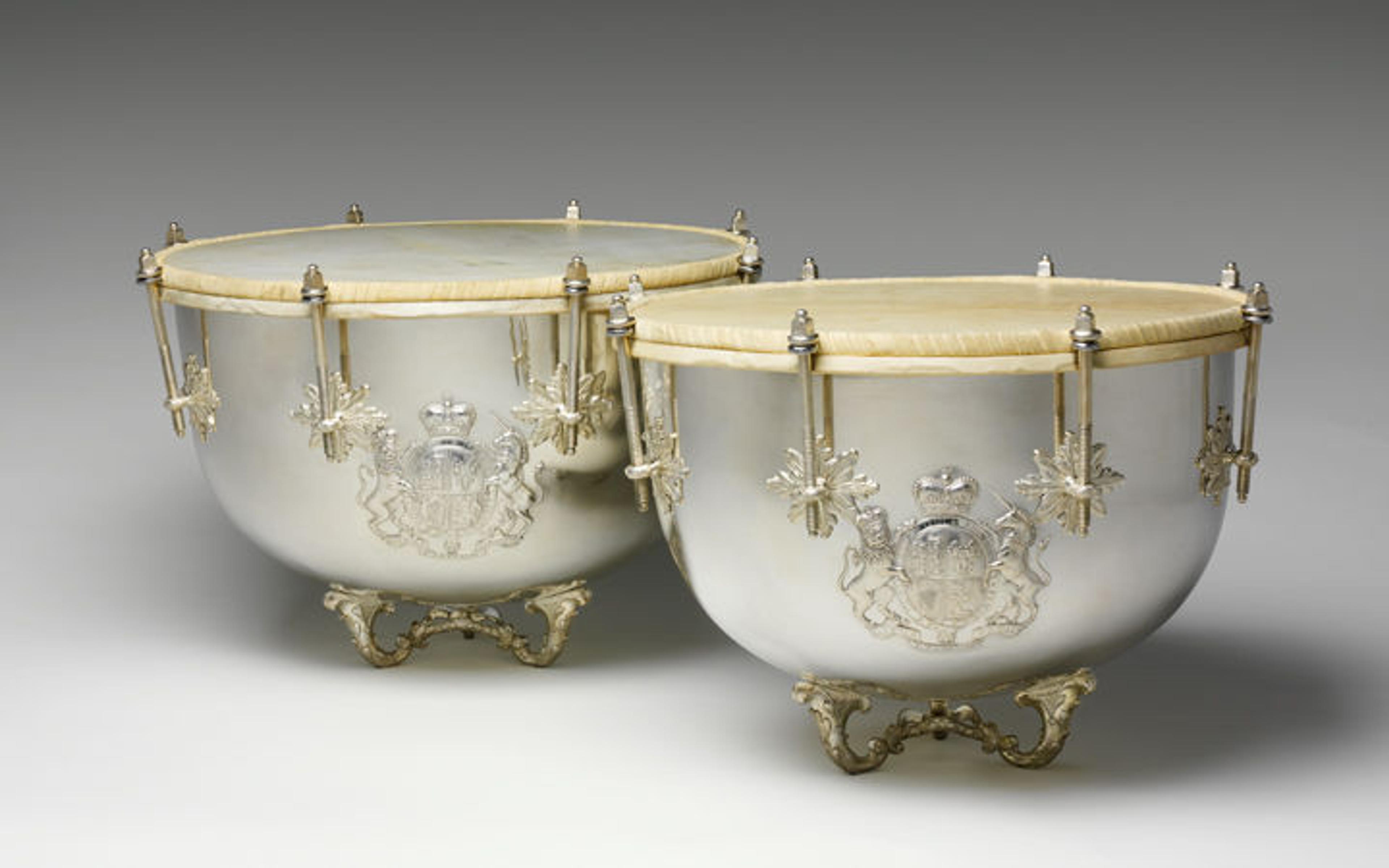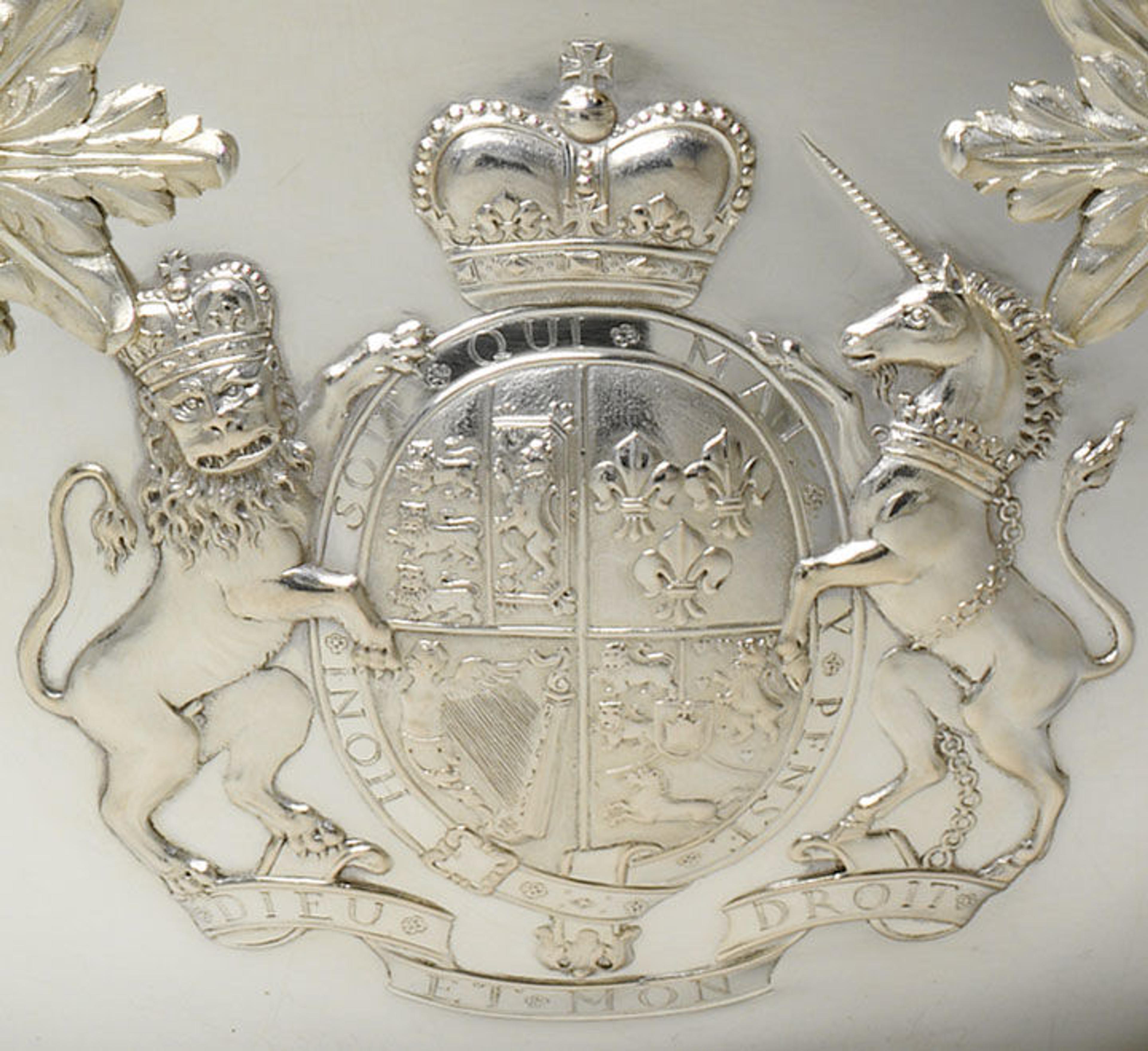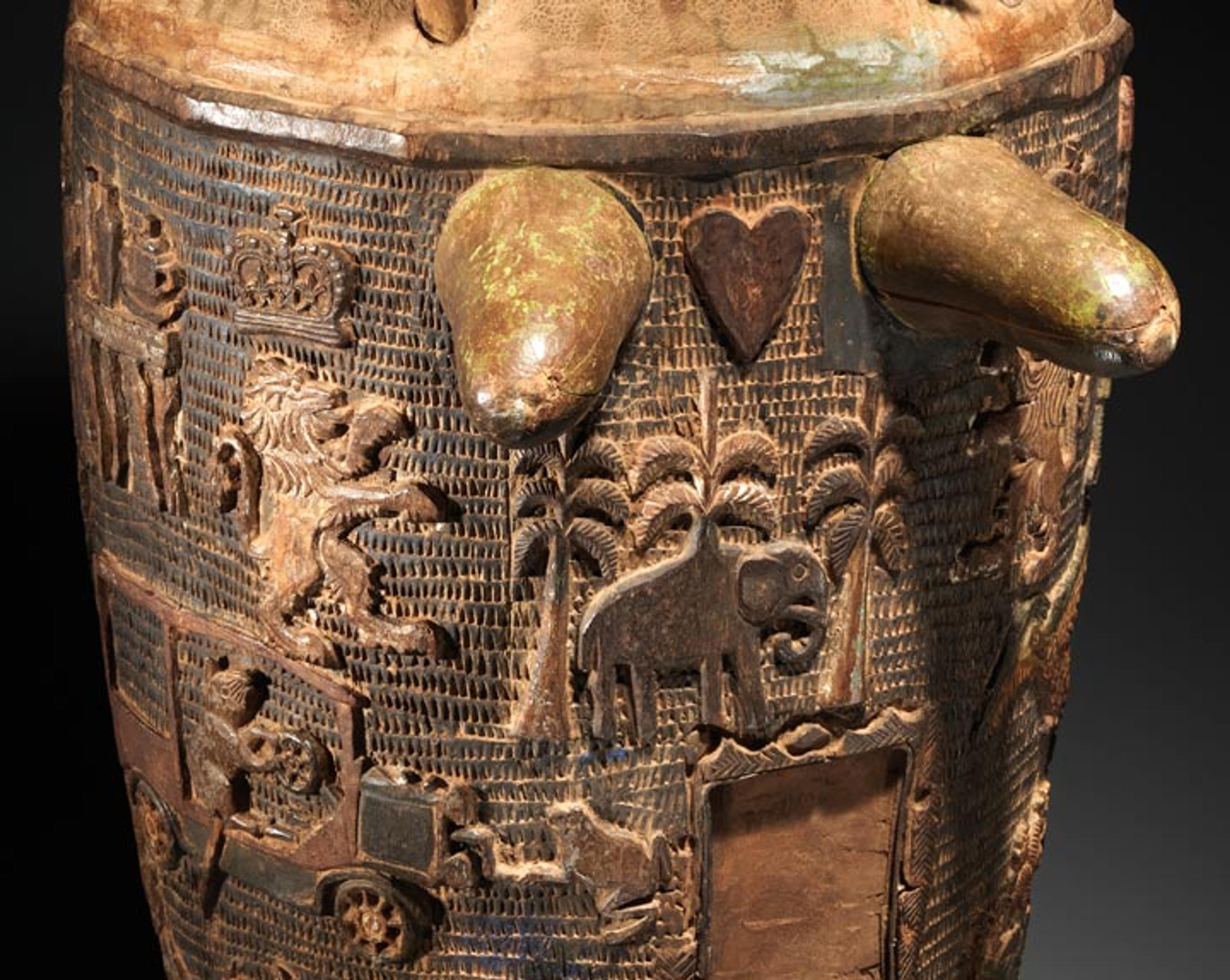Drums of Power and Resistance

Franz Peter Bunsen (German, ca. 1725–1795). Kettledrums, 1779. Silver, iron, calfskin, textiles, Diameter: 53 cm (20 7/8 in.); Height: 41 cm (16 1/8 in.). The Metropolitan Museum of Art, New York, Purchase, Robert Alonzo Lehman Bequest, Acquisitions Fund, and Frederick M. Lehman Bequest, 2010 (2010.138.1-.4)
«Musical instruments are primarily used to produce sound, but frequently their decoration carries great visual symbolism. This is the case with two drums in The Met collection that have a similar decorative motif—in one case a symbol of power, the other one of resistance.»
Kettledrums have long been symbols of wealth and power in Europe. The appearance of kettledrums and trumpets played on horseback for ceremonial events and on the battlefield was so impressive that the nobility sought to control who could play the instruments and who was allowed to hire the musicians to play for them. The trumpeters and drummers in the Holy Roman Empire even established a guild, in 1623, that protected their status and controlled the use of the instruments.
These instruments played an important role in signalling cavalry on the battlefield and were restricted usually to the military units that protected the monarchs. This made the capture of kettledrums a high prize, as it marked not only a victory for those that took the drums, but a humiliating defeat for the side whose drums were captured. As late as the end of the 17th century, the French army dictated that only military units that had captured kettledrums in battle were allowed to use them.
Silver kettledrums are extraordinarily rare and were only commissioned for the most powerful European royals. They were a public display of wealth, magnifying the prestige of the owner, and their use was an act of political propaganda. Although the sound of these drums is not significantly different from similarly sized copper drums, the incredible sight of solid silver drums was a reminder of the awesome military power of the monarch and the state.
In 1780, George III, then the king of Great Britain and Ireland and the elector of Hanover, commissioned a pair of royal silver drums for his Life Guards regiment in the city of Hanover. The instruments were built by the court silversmith Frantz Peter Bundsen (1725–1795), and each drum bears the crest of George III prominently.

Detail view of the Bunsen kettledrums showing the crest of George III
The coat of arms was exquisitely executed using the repoussé technique, in which the maker presses the design out from the inside of the drum before chasing and engraving the fine detail. The crest includes the heraldic devices of King George III, royal mottos associated with the crown, and on either side the standard bearers standing on their back legs. On the right is a unicorn representing Scotland, and on the left the royal lion of England wearing a crown. The magnificent drums represented King George III at the Hanoverian court for state occasions, even though he never visited his German electorate.
Left: Breasted drum, ca. 1940. Ghana. Akan, Ashanti. Wood, skin, paint, Height: 42 3/8 in. (107.6 cm); Width: 24 11/16 in. (62.7 cm); Diameter: 9 15/16 in. (25.2 cm). The Metropolitan Museum of Art, New York, Gift of Lyle and Louise Brown, 1982 (1982.387)

In Africa, royal drums also represented and personified the king. If drums were seized on the battlefield, it was as if the king himself had been captured. Other types of African drums could communicate a variety of messages, as is the case with a drum from the Museum's collection built in Ghana. This large drum has a pair of breasts indicating the drum's role as the "mother" of a musical ensemble. Undecorated breasted drums were first documented in the 19th century. The Ashanti people who produced this drum around 1940 based their economic and political organization around matrilineal lineage, or female inheritance.
The Met's breasted drum would have been used in the Ntan music bands that were most popular in Ghana between the 1920s and 1950s. The groups would have played for important public occasions such as naming ceremonies, weddings, and festivals, in contrast to other instruments and ensembles that would have been reserved for the court.
The drum head is held in place by a leather rim and fastened by V-laced sinews to seven wooden pegs inserted into the upper section of the drum's body. The lower section of the drum is elaborately carved with images that represent Ashanti culture, proverbs, and satire. Made during the colonial rule of Ghana by the British, it also has images related to the anti-colonial political mood at the time of its creation.

Detail view of the heart, elephant, and royal lion of England carved on the side of the breasted drum
Located in the dominant position between the two breasts is a large heart signifying patience, as everyone should have the heart of a mother. Located immediately below the heart is an elephant between two palm trees, with a third palm tree appearing to grow from its back. This is associated with the proverb that "only the elephant can uproot the palm tree," a sign of strength. Significantly, on either side of this carving is the royal lion of England, as seen in the coat of arms of British monarchs.
The political message on this Ashanti drum is that with strength and patience, the British will be pushed out. So while these very different drums—separated by more than a century and a half in date of creation—are both decorated with an image of British royalty, they have opposite intentions: the kettledrums express the power of the state, and the breasted drum carries an explicit message of resistance against the state.
Related Links
Of Note: "Drums Fit for a King" (June 16, 2014)
Of Note: "A Patriotic Drum, for the Fourth of July" (June 30, 2014)
Jayson Dobney
Jayson Dobney is the Frederick P. Rose Curator in Charge in the Department of Musical Instruments.
Follow Jayson on Twitter: @JayKerrDobney